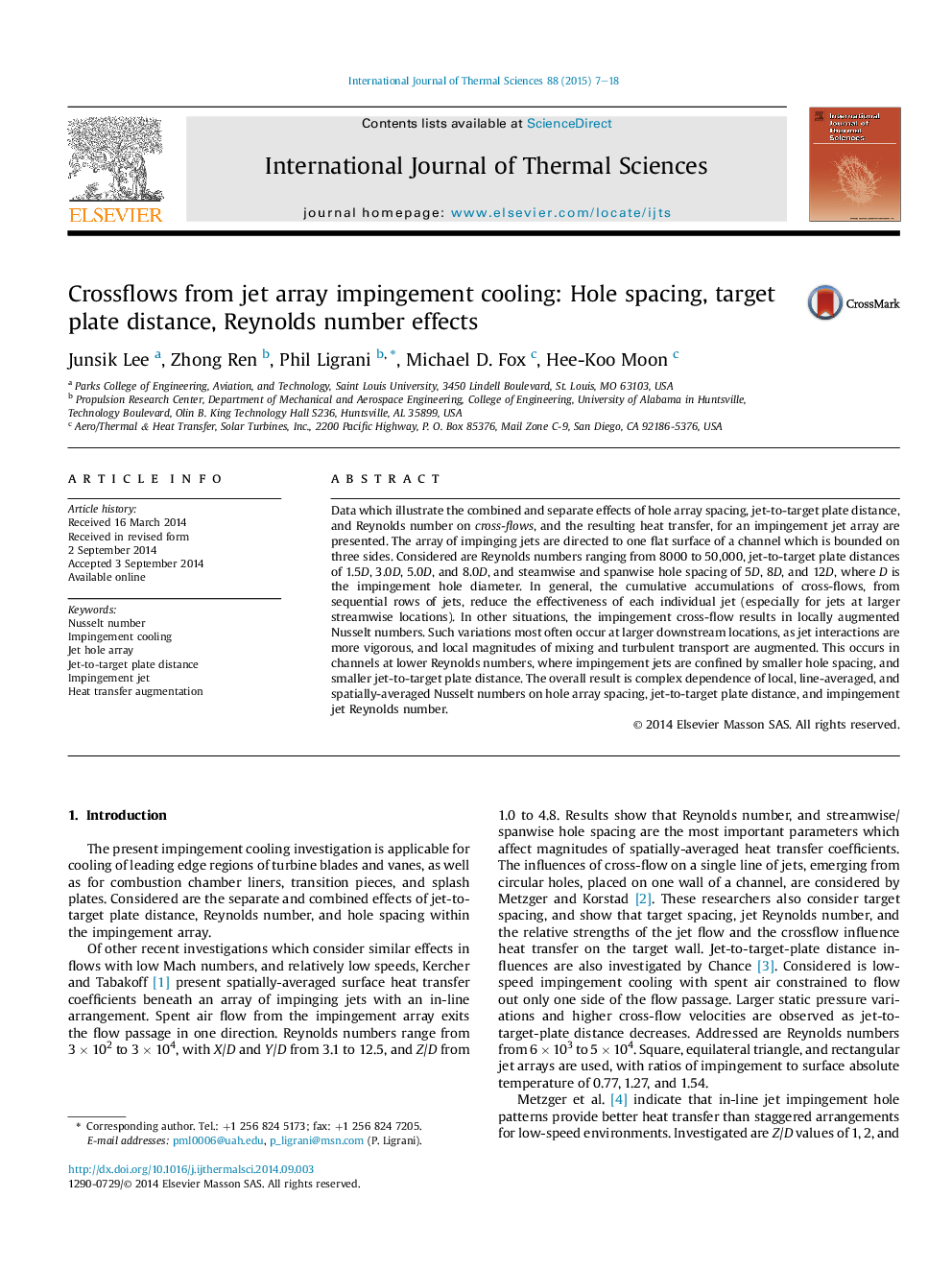| Article ID | Journal | Published Year | Pages | File Type |
|---|---|---|---|---|
| 668238 | International Journal of Thermal Sciences | 2015 | 12 Pages |
Abstract
Data which illustrate the combined and separate effects of hole array spacing, jet-to-target plate distance, and Reynolds number on cross-flows, and the resulting heat transfer, for an impingement jet array are presented. The array of impinging jets are directed to one flat surface of a channel which is bounded on three sides. Considered are Reynolds numbers ranging from 8000 to 50,000, jet-to-target plate distances of 1.5D, 3.0D, 5.0D, and 8.0D, and steamwise and spanwise hole spacing of 5D, 8D, and 12D, where D is the impingement hole diameter. In general, the cumulative accumulations of cross-flows, from sequential rows of jets, reduce the effectiveness of each individual jet (especially for jets at larger streamwise locations). In other situations, the impingement cross-flow results in locally augmented Nusselt numbers. Such variations most often occur at larger downstream locations, as jet interactions are more vigorous, and local magnitudes of mixing and turbulent transport are augmented. This occurs in channels at lower Reynolds numbers, where impingement jets are confined by smaller hole spacing, and smaller jet-to-target plate distance. The overall result is complex dependence of local, line-averaged, and spatially-averaged Nusselt numbers on hole array spacing, jet-to-target plate distance, and impingement jet Reynolds number.
Related Topics
Physical Sciences and Engineering
Chemical Engineering
Fluid Flow and Transfer Processes
Authors
Junsik Lee, Zhong Ren, Phil Ligrani, Michael D. Fox, Hee-Koo Moon,
